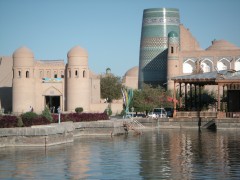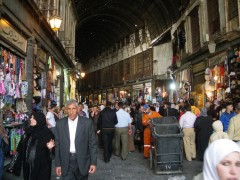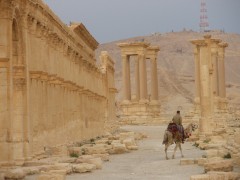
The old city of Khiva
Mention that you are travelling to most Muslim countries and you are likely to get a look of concern. “Is it safe?”; “Why do you want to go there?”; “I don’t understand why they don’t like us”; all likely reactions if you live in the US or UK. And this is a shame, as people miss out on some of the best experiences that travel has to offer. Not only does the experience of travelling in the countries where Islam is the predominant faith offer an exposure to the way of life for over a billion Muslims and potentially foster a greater understanding of this religion; it also gives the traveller the opportunity to visit some incredibly beautiful places.
Islam is the dominant faith in a large bloc that spreads eastwards from Morocco across North Africa, through the Middle East, into Central and Southern Asia and on to Indonesia. It covers the birthplace of major civilisations, historic battles, formidable dynasties and scientific and technological breakthroughs. The legacy of this rich history is seen in the mosques, madrassas, libraries, tombs and fortifications, while many countries in this region are home to some of the most important historical sites from other faiths, many of which have been preciously preserved and restored.

Damascus street scene
A trip through Syria can provide amazing insights into the Crusader Christian invasions and the Roman occupation of this area; likewise in Libya some of the world’s finest Roman ruins can be found. Central Asia (in particular Uzbekistan) is home to some of the finest Islamic architecture, carefully restored during the last hundred years by the Soviets and later the Uzbeks. And in Indonesia you can admire the Hindu temples around Bali, an output of that faith for around 400 years.
Having recently travelled through Syria and before that Central Asia, one of the most enduring memories is not so much the stunning architectural treasures, but the people we met while there. Across both places we were met with an understated warmth: no fussing, no overly exuberant welcome; just a respect and curiosity that was easy to reciprocate. In Syria as in neighbouring Jordan, it is universal practice to ask any visitor where they are from and immediately reply “you’re welcome”. In Kyrgyzstan and Uzbekistan, where English is little spoken, greetings are often exchanged in warm smiles.

Roman city of Palmyra, Syria
Central Asia has blended Islam into its local nomadic cultures, and thrown in a bit of Russian into the bargain. So you may find your hosts eating with the right hand only, adopting many of the superstitions associated with nomadic dwelling and yet toasting you with the finest vodka. In Syria too, wine flows freely in the old houses and courtyards of Damascus and Aleppo while the call to prayer rings out in the background. Yet in both places an underlying modesty was evident in the people we met. There were no rowdy people in the streets, we felt completely safe walking through the cities late in the evening (much more so than I ever would in London), and people would be only too willing to help us when we needed directions.
Certain elements of our media appear only to eager to paint a dim picture of an entire faith and its people, and perhaps in our own view of the world it is often easy to place our perceptions into clealy labelled black and white categories. This is where the experience of travel can offer us such great insights, and a trip to the Muslim world will certainly challenge any such assumptions. I suspect the average “man on the street” in Damascus or Tripoli associates his underlying values and beliefs far more closely with his counterpart in London and New York than with an extremist or terrorist.
The more the different cultures of the world are able to mingle and learn about one another, the more we will realise how alike we are. I spoke with an American tour operator recently who runs a Bridges to Islam programme in the US, where non-Muslim people are able to visit a mosque and spend time talking with the local Muslim people. What a great idea, I thought. I was very pleased to hear that the programme was also their most popular one, and took it as a positive sign that there is an appetite to learn about the similarities between different faiths and cultures as well as the differences.






I have worked in Africa with several Moslem communities and have the highest regard and respect for them. They have extremely high values and often their morals are far superior to those in the ‘civilized’ west. As you mentioned, as always, images are tarnished by the minority extremists, a great shame. I have the Koran and the Bible sitting side by side on my bookshelf, both still waiting to be read… one day…
I’ve always been of the belief that the better we know one another, the less likely we’ll be to want to kill one another. Well done!
Well said.
I enjoy reading your blog.
Thank you for sharing the world with us.
Thank you Barbara and Charlane, and great quote B! Another version is the argument for trade, that if we rely on countries to trade with then war is less likely. Why
i could not agree more with this blog having come back from syria! oh world, open you eyes
Thanks Justin, Syria is amazing isn’t it. Where did you visit?